Find the Resource
You Want
Sort through all available resources to find a microlearning opportunity that suits your needs. Finding a great resource is quick and easy: click on the categories you want or search for a term you would like to learn more about.
Don’t forget to bookmark this page and come back later as more resources are constantly being added.

Search and Filter
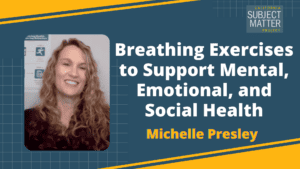
Breathing Exercises to Support Mental, Emotional, and Social Health
Explore deep breathing with Michelle Presley, a health education expert. Discover how it reduces stress, slows the heart rate, and boosts well-being. Learn the Belly Breathing technique, perfect for high
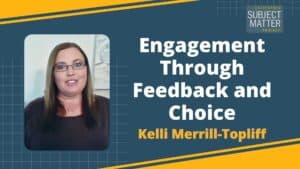
Engagement Through Feedback and Choice
Join Kelli Merrill-Topliff, an elementary PE teacher, as she unveils a powerful method for boosting student engagement. By focusing on perceived competence through specific feedback and choice-based learning, this approach
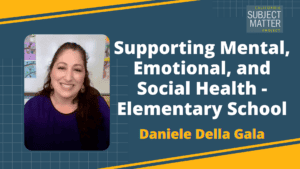
Supporting Mental, Emotional, and Social Health – Elementary School
Discover practical strategies from teacher leader Daniele Della Gala to support elementary students’ mental and emotional health. Learn how to help them understand and manage their emotions while fostering valuable
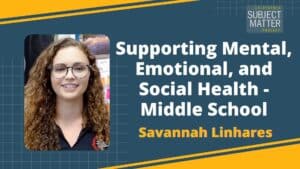
Supporting Mental, Emotional, and Social Health – Middle School
Savannah Linhares, a middle school science teacher and mental health advocate, presents a proactive approach to nurturing students’ mental well-being in this video. Emotional awareness is emphasized, along with practical
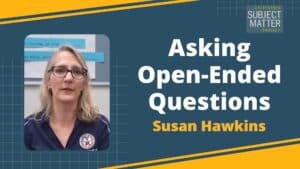
Asking Open-Ended Questions
In this video, Dr. Susan Hawkins introduces the impactful instructional practice of asking open-ended questions. This approach encourages deeper thinking among students by placing value on their ideas and fostering

Using Jamboard to Build Rapport with Students
Monica Galvan, a bilingual teacher, shares effective techniques using Jamboard, a free digital whiteboard tool. Her strategies apply to all grade levels and subjects, promoting engagement, check-ins, collaborative projects, and
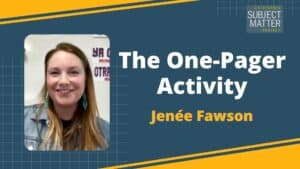
The One-Pager Activity
Jenée Fawson, a Spanish teacher, introduces “The One-Pager,” a versatile teaching tool. It’s a single-page activity where students visually summarize key lesson concepts using symbols and words. This strategy works
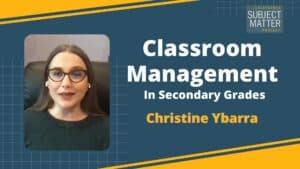
Classroom Management In Secondary Grades
Christine Ybarra, a teacher leader with the California Reading and Literature Project, offers valuable classroom management tips for secondary classrooms. She stresses the importance of clear expectations, engaging introductions, and

Power Writing: A Writing Fluency Activity
Join Jamie Lanham, an Instructional Coach at San Diego Global Vision Academy, to explore “Power Writing.” This engaging writing fluency activity is perfect for K-3 students, requiring no prior preparation.

The Raffle Ticket Activity
Explore the fantastic Raffle Ticket Activity with Katie Martel, an Education Specialist and eighth-grade math teacher. Discover this powerful positive behavior management strategy that can transform your classroom. Katie shares
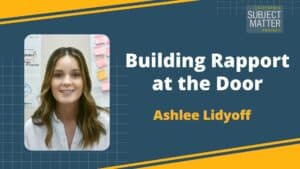
Build Rapport at the Door
Ashlee Lidyoff, an academic coach, shares the impactful strategy of “Building Rapport at the Door.” Greeting students by name as they enter your classroom fosters a positive and supportive learning
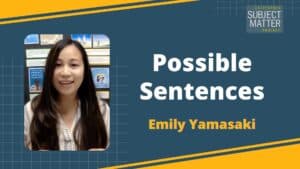
Possible Sentences
Join Emily Yamasaki, an instructional coach, in discovering “Possible Sentences,” an engaging pre-reading strategy suitable for grades 2 to 8. This no-prep approach helps students predict content and activate prior
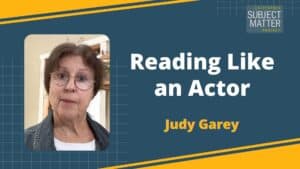
Reading Like an Actor
Discover an exciting reading strategy with Judy Garey, an author and theater professor from Ventura College. Inspired by acting techniques, this approach delves into character evidence and biographies, bringing literature
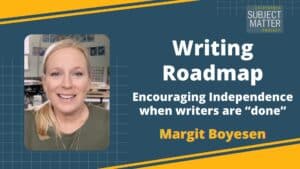
The Writing Roadmap
Explore “The Writing Roadmap” with Margit Boyesen, a second-grade teacher from Cardiff Elementary in Cardiff, California. This powerful tool guides students through the writing process, from drafts to revisions. Whether
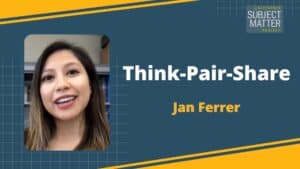
Think-Pair-Share
Unleash the potential of “Think-Pair-Share” with Jan Ferrer, a seasoned teacher and consultant. This dynamic routine amps up class discussions, promoting active engagement, collaboration, and critical thinking. Jan’s approach adapts
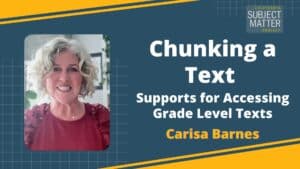
Chunking a Text: Supports for Accessing Grade Level Texts
Join Carisa Barnes, a seasoned Literacy Instructional Coach, to unlock the secret to conquering challenging texts with her strategy, “Chunking a Text.” Perfect for teachers in grades six through twelve,
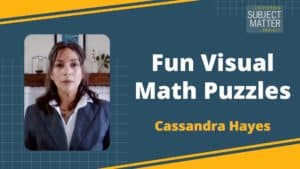
Fun Visual Math Puzzles
Join Cassandra Hayes, a math teacher in Fortuna Elementary School District, Fortuna, California, and a teacher consultant for the Redwood Writing Project, as she introduces an exciting math lesson to
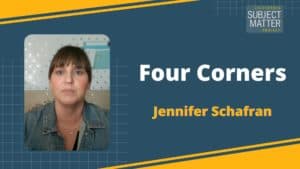
Four Corners
Discover the “Four Corners” activity with teacher leader Jennifer Schafran. This versatile classroom technique encourages active engagement and builds trust and community. It can be a quick five-minute exercise or
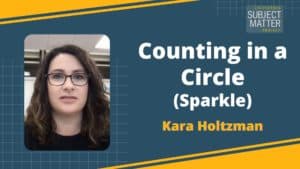
Counting in a Circle (Sparkle)
Learn the engaging “Counting in a Circle” or “Sparkle” activity from teacher leader Kara Holtzman. This versatile routine is perfect for practicing counting and can be adapted for all elementary
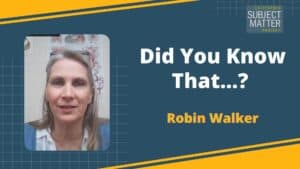
Did You Know That…?
Robin Walker, an educator from the Santa Maria-Bonita School District, shares the “Did You Know That..?” activity, a powerful tool for connecting with students from second grade to high school.

See, Mean, Matter
Chris Lewis, an educator at Mountain View High School in El Monte, introduces the “See, Mean, Matter” strategy for analyzing political cartoons. This approach guides students through three steps: understanding
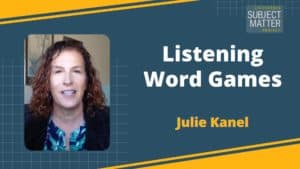
Listening Word Games
Julie Kanel, a reading specialist, shares three interactive “Listening Word Games” for young learners, promoting phonemic awareness. These games, suitable for grades TK to 2, help improve students’ reading and
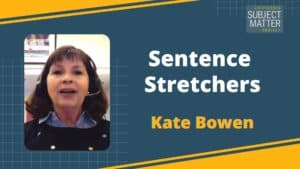
Sentence Stretchers
Kate Bowen, an experienced Elementary Consultant, shares an effective strategy called “Sentence Stretchers” to enhance students’ writing skills. Using four sentence strips labeled A, B, C, and D, students construct
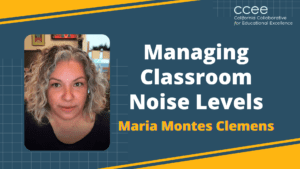
Managing Classroom Noise Levels
Maria Montes Clemens, an elementary school Spanish teacher at Prospect Sierra, shares three classroom management strategies to help you create an orderly learning environment: the “Voice-O-Meter”, the “Give Me Five”,
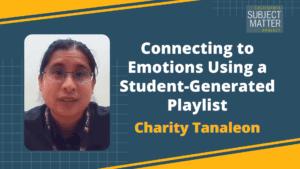
Connecting to Emotions Using a Student-Generated Playlist
Charity Tanaleon, former band director at Norwood Junior High School, uses student-created music playlists as a way to learn more about students and engage them to reflect and express their
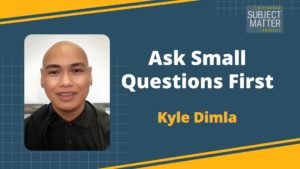
Ask Small Questions First
Kyle Dimla, a high school environmental science and
biology teacher, shares how he generates engagement and discussion in the classroom by asking small questions and using the see, think,

Three Reads Protocol
Gloria Hurtado, 8th grade math teacher at Hillsborough Junior High School, tells us how to utilize the “Three Reads Protocol” to help students better understand what a math word problem
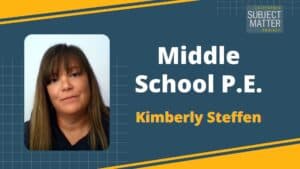
Middle School P.E.
Kimberly Steffen shares best practices and tips for anyone wishing to teach Middle School P.E. (This is the third video of the four-part Physical Education video collection.)

Elementary School P.E.
Danielle Della Gala shares best practices and tips for anyone wishing to teach Elementary School P.E. (This is the second video of the four-part Physical Education video collection.)
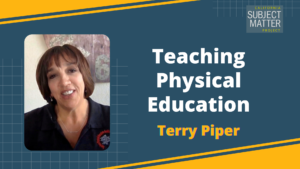
Teaching Physical Education
Terry Piper kicks off the four-part Teaching Physical Education video series by sharing best practices and tips for anyone wishing to teach P.E. in schools.
For tips specific to
